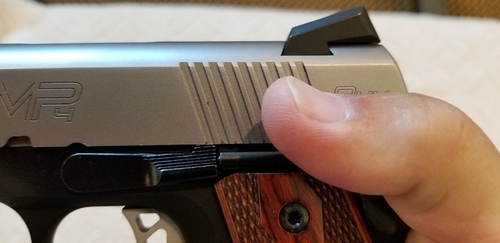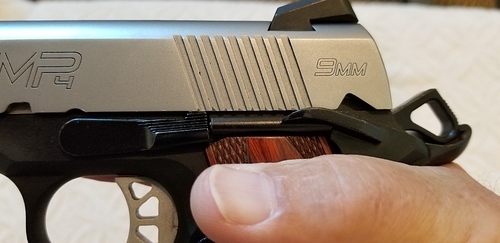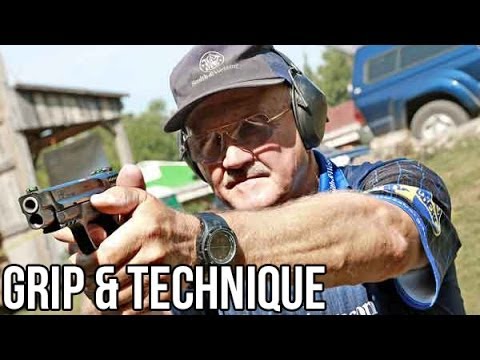My EDC is a Glock Gen5 9x19. I’ve been shooting Glock pistols for over 20 years but have never had any training from experts or ever before until now watched any training videos.
I’ve watched a couple of the two-handed-grip training videos here. They recommend: 1) placing the palm (that portion at the base of the thumb) of the support hand on the grip tightly against the opposing palm of the trigger hand so as to close the gap on the grip ; 2) placing the thumb of the support hand below and parallel along with the thumb of the trigger hand; 3) wrapping the four fingers of the support hand around and over the three fingers of the trigger hand at the front of the grip; and 4) stabilizing the pistol by applying pressure only to the two palms on the grip.
Different from what I’ve seen in the videos here, for my two-handed grip I have always before placed the thumb of my support hand over and across the thumb of my trigger hand. That seems to be the more comfortable position for me. It’s more like quickly, in the process of firing multiple rounds, adding a second hand to my usual one-handed grip, rather than quickly, as I’m shooting or preparing to shoot, changing the one-handed grip of my trigger hand to accommodate a second hand. Not sure that it makes any difference. Requesting comments as to whether I should train to instead place the support hand thumb under the trigger hand thumb, as described in the videos here.
Also different from what I’ve seen here, I have always gripped the front, outside of the trigger guard with the index finger of my support hand. That seems to add stability for me, and seems to minimize upward recoil bump of the front of the pistol and helps to recover sight more quickly. Requesting comments on that, too, as to whether I should train to instead keep the index finger of the support hand back with the other fingers. (I anticipate that some might say that placing the index finger of the support hand anywhere forward from the trigger rather than below the trigger guard risks accidental bump of the trigger and discharge by that support index finger.)
Thanks in advance for any thoughtful input.

 solid, but not bone crushing.
solid, but not bone crushing.

